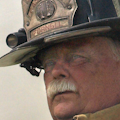Most attack line hose beds are stacked vertically, and being able to remove them quickly and efficiently stretch them to the point of operation is a basic fireground challenge. When deciding how to pack an attack line hose bed, a good dose of common sense is in order.
Ok, you say, this is just basic stuff, but stay with me here.
It seems that everywhere I go, I see hose packed in countless unmanageable fashions, mostly as a result of whoever decided to use them did not fully understand the basics of hose line management.
I witnessed a drill not long ago when a firefighter stretched a department’s high-tech, wizzy hose load, and then dropped it into a pile before it was extended its full length, getting it all knotted up in the process. While the idea of being able to extend the line with minimum effort and have the working line easily flaked out at the nozzle end was commendable, in actual practice it came down to a firefighter not fully understanding (or forgetting) its operational concept. The use of this particular load was further questioned when none of the firefighters on the scene could remember how to pack it back in the rig.
Let’s start at the beginning.
A common cross lay hose bed with the hose connection at the bottom, or a rear preconnected bed with the hose connection at the front or rear of the bed, usually has the hose packed in two or more stacks.
The first item to consider when customizing this bed is how we can make it easier for a firefighter to grip the hose in order to remove it quickly. Common sense tells us that if a few loops of hose, longer than the folded ends of the bed are placed on the ends of the bed when the hose is packed, a firefighter has a much easier time getting it out of the bed.
If the hose bed is quite a distance from the ground, one consideration might be to make the loops long enough so that vertically challenged firefighters, like me, can easily reach the loops without climbing.
If these “bunny loops” are placed at the bottom of the bed, as they commonly are, when the hose is pulled, it has nowhere to go except on the ground next to the engine, usually in a jumbled mess.
If the loops are placed halfway up the bed, things get better. The firefighter can pull the loops, place the hose above on his or her shoulder and walk toward the point of operation, clearing the bottom half the bed in the process, and having the hose in top half of the load closer to the point of operation.
The advantages to this type of load is that everyone on the department remembers how to pack it, and it gets more hose closer to the point of operation than just pulling the nozzle from the top of the bed.
I know there are other loads such as the minuteman where the top half is packed upside down with the nozzle in the middle, and the triple lay where the hose is packed back on itself and then folded into the hose bed, and these are fine and work well if the department trains with them and continues to evaluate their effectiveness at each fire.
Sometimes, less is more, and when you are designing your hose beds. Two important points you need to consider is, #1 getting enough working line stretched to the point of operation without running back and forth to the rig, and #2, does everyone understand how to stretch and pack it. More later.
About the Author

Capt. Dave Fornell
Captain David P. Fornell is active as a line officer in the Casstown Community Fire Department, Casstown, OH, protecting 88 square miles of rural area in and around Casstown, Ohio. He formerly held the rank of Captain of the Beckerle & Company, Hose Company, Engine #9 of the Danbury, Connecticut fire department protecting a busy city of 85,000, and was the full time Chief of the Westchester, Illinois fire department, a suburb of Chicago. He started his career as a firefighter in the Addison, IL Fire Department, located about 20 miles west of Chicago. Capt. Fornell is a certified fire service instructor specializing in engine company operations, company officer development and fire ground safety courses and he holds the rank of Honorary Battalion Chief of the FDNY. He is the author of "FIRE STREAM MANAGEMENT HANDBOOK" along with an accompanying training video published by Fire Engineering Books and Videos, and served seven years as the Executive Editor of FIRE APPARATUS magazine. Capt. Fornell has written articles for FIRE ENGINEERING and FIREHOUSE magazines in the U.S., FIRE AND RESCUE and MILITARY FIREFIGHTER in the United Kingdom. He has hosted the rural water supply, engine company operations and line officer training segments of "THE FIRST LINE SUPERVISOR" for the FETN television network.
